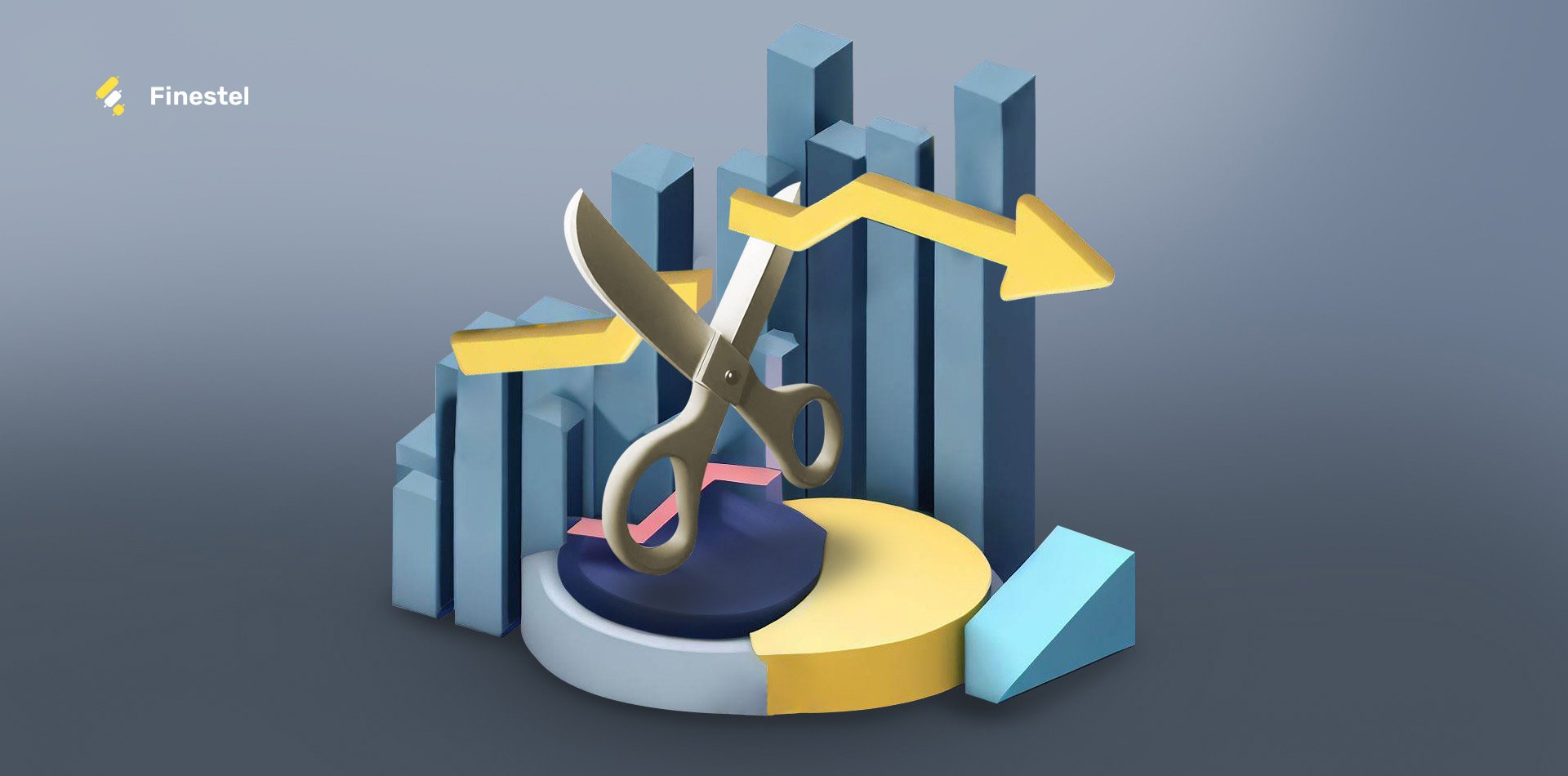As of writing this article, $1 billion is the worth of fraud in the cryptocurrency market since the start of 2023. The cryptocurrency market is experiencing growth, and this growth is mostly virtual, meaning based on the internet, not a tangible asset like Gold. Due to its nature, the cryptocurrency market is subject to online fraud, new government regulations, and system flaws.
Now imagine you heard, “Your friend is buying Bitcoin, wishing a price increase and making a profit.” Let’s explore what risks lie in this sentence. First, buying a cryptocurrency requires a wallet to keep, an address to receive, and an exchange to buy. Up to now, we have identified three risks. First, counterparty risk, any flaws in reciprocal activities by you and exchange; second operational risk, any flaws in smart contract codes; third, market risk, the price may plummet. Hence, a successful trader and investor analyze those risks and maintain strategies to mitigate them.
In the blog post on Finestel, we inspected crypto risk management strategies. To analyze that, you will first read and identify the types of crypto risks in the market. Afterward, we have provided you with the ways to mitigate those risks and how to develop a risk management plan. Then, we introduced tools for crypto risk management that every professional trader must be aware of their existence. By reading this article, you will get acquainted with risks in the crypto market and the ways to mitigate them.
Risk Management in Crypto Trading
Imagine yourself in 2009 and only a bunch of people talking about something called Bitcoin. Up to now, buying Bitcoin is risky, and the SEC still issues caution for buying Bitcoin. What was mentioned was Bitcoin, and imagine their position with other cryptocurrencies.

However, it seems fair that governmental bodies issue warnings. Per a report published by SEC, from January 2021 to March 2022, Americans lost over $1 billion to cryptocurrency fraud. Now imagine other types of market risks like unclear regulations, custody, cyber security, volatility, illiquidity, and business risks. Hence, to navigate and address risks involved in crypto trading, traders and investors must be familiar with the types of risks and the techniques to mitigate them.
Key Concepts of Risk Management Strategies
To understand the concepts of risk management in any market, traders and investors must first analyze the risks in that market. For example, in the options trading market, the risk lies in the premium you pay to enter a position. Keeping that fact in mind, let’s explore different risk types in crypto trading that all traders and investors must be aware of. First are the volatility risks; for example, the Bitcoin price was $48,000 at the beginning of 2022 and $16,000 at the beginning of 2023.
Next are the risks associated with exchanges; the Mt, Gox exchange collapse in 2014 led to a loss of 850,000 Bitcoin. After that lies the risks with scams and fraudulent cases in crypto trading like ICO offerings, fake NFT, Giveaway scams, and pump and dump. Finally, to manage risks in the crypto market, traders and investors should first know what are the risk types in this market.
Importance of Crypto Risk Management Strategies
The primary objective of risk management in any financial market activity is to minimize losses and maximize profits. In the crypto market, the narrative remains unchanged.
Imagine you have bought a DAO coin and followed all necessary measures, but still, a glitch in DAO’s smart contract code would make you lose your capital. That is why crypto traders must be wary of all aspects of risk management.
All mitigatory measures are conducted to minimize the risks involved in the crypto market. In the following sections of this post, we have addressed different types of risks and techniques to mitigate them.
Common Types of Risks in Crypto Trading
Due to its technological nature, the crypto market has different and varied accounts of risks that must be analyzed. First, external forces impose risk types like governmental regulations, market conditions, and operational risks. Crypto traders have the minimum control over them; however, knowing them is critical for traders. The next risk types in crypto are regarding traders’ expertise, like leverage and margin risk, emotion control, and diversification.
These forces can be achieved by researching, analyzing market conditions, and managing assets. Thousands of posts and articles mention and address the personal factors of crypto risk management strategies. However, only a little information is available to address factors like governmental factors. Hence, in this article, we have tried to address and navigate the forces that affect crypto traders while they have control over them.
Market Risk
To explore risk management concerning market risk, let’s first inspect how this market can bear risks. The crypto market, in essence, is volatile; it means traders’ assets are prone to pump or, on the other hand, drop. The other factor, or let’s say, force is about regulations. Now let’s explore each market risk in detail.

- Liquidity Risk: Liquidity risk is another factor that changes the anticipations in an illiquid market; you will have difficulties buying and selling your asset.
- Market Manipulation: You may still remember what happened with LUNA, the major shareholders sold their LUNA assets overnight, and the price dropped nearly $0.
- Lack of Regulations: From 2017 to 2018, many startups fundraised and attracted investors for ICOs with no delivery of the product.
- Fake News: In April 2018, as a result of fake news that Binance had been hacked, the sell-off happened, and many traders sold their assets, and the market experienced a sharp drop.
Regulatory Risk
Regarding regulatory risk, the first thing that comes to mind is the new rules and terms imposed by governments. The governments claim that these measures are for protecting their citizens due to a lack of awareness. This is true in most case scenarios, together with the financial system’s stability, sovereignty, and monetary policy. However, depending on the countries’ position on these regulations, these rules may be more strict or more crypto-friendly, like El Salvador. Here are some other regulatory risks.
- Taxation Policies: Since the crypto market still lacks clear policies on taxation, traders should be aware and expect a “come tomorrow” policy that can heavily affect your portfolio.
- Money Laundering: In 2021 Japan and UK started investigating Binance for operating without proper authorization.
- Governmental Monetary Policies: The widespread crypto payments may contradict the financial factors governing countries’ economies.
Security Risk
The cryptocurrency world has experienced many security flaws since its existence, driven by the digital nature of cryptocurrencies. The most vulnerable entities for fraud are exchanges, wallets, transactions, and the fact that cryptocurrency transactions are irreversible. Here are some types of security risks in the cryptocurrency space.
- Loss or theft in digital wallets by phishing scams and other cyberattacks.
- Ransomware is a phishing technique that scammers use to encrypt users’ data files and make them inaccessible to owners.
- Smart contracts are usually subject to malfunctioning, resulting from flaws in coding, and favor the scammers.
- A 51% fork is a rare attack on cryptocurrency exchanges where attackers control over 50% of the network’s mining hash rate.
- Social media are scammers’ heaven; they send messages that you are our lottery winner and then ask for your account credential.
Counterparty Risk
Per a survey conducted by thetradenews.com, more than 50% of traders voted for counterparty risk as their major concern. This happened after the FTX exchange collapsed in November 2022. A counterparty risk in the crypto market happens when two parties are involved in a transaction, and one party fails to fulfill its obligations.
For example, you buy Bitcoin on an exchange, and the exchange is not connected to a real order book, and they forge your transaction. Another counterparty example is when you lend your money in exchange if they do not pay you back timely, they fail to fulfill their obligation. As a result of this flaw in the crypto space, the exchanges started to publish proof-of-reserve to help reassure investors.
Operational Risk
As the name suggests, operational risks refer to all risky activities that occur while buying, selling, opening an account, or many other activities within the crypto space. Enumerating these risks requires a comprehensive post; however, we have provided you with the most common ones.
- Network congestion due to high demands is prevalent in crypto transactions, especially with Bitcoin and Ethereum.
- Another operational risk that happened rarely is an exchange outage. For example, Binance 2020 experienced a temporary exchange outage.
- Any technical glitch in wallets, exchanges, or blockchain networks, can lead to system failure.
- Inaccurate accounting practices in order books can result in misreporting or discrepancies in user account balances.
- Software bugs are also a part of the crypto ecosystem, where attackers use vulnerabilities to access users’ data. For example, the Parity wallet bug in July 2017 caused 150,000 Ether (ETH) to be inaccessible.
Leverage and Margin Risk in Futures Trading
In cryptocurrency trading, leverage and margin trading are two important factors that mostly involve experienced traders. The risks associated with this trading type are relatively personal, like not knowing about future trading, overtrading and emotional trading.
The concept behind leverage is to amplify your trading amount while you may not have enough capital. Hence, this amplification has two ends, wins amplifications and loss amplifications. The main risks stemming from leverage and margin trading are liquidation, volatility, and psychological factors.
First, there are dozens of examples that market volatility resulted in traders’ liquidation. For example, in 2022, the Bitcoin price dropped sharply, and many traders lost their capital, later that date dubbed ‘Bitcoin Black Thursday”. Although volatility is the essence of all markets, and the profits and losses stem from price changes, the volatility in the crypto market is known to be high. Finally, psychological factors in crypto trading are, to a large extent prevailing, and they can lead to emotional decision-making.
Crypto Risk Management Strategies
We have mentioned that trading in the cryptocurrency market is a high-risk practice, with many risk types imposed by the market or self. However, when the risks come into existence, the ways to mitigate them give birth to researchers; if not, that market will vanish shortly.
Here we are, and the crypto market is expanding daily, which means cryptocurrencies have come to stay. So it is crucial for traders to first identify the risk types and then employ ways to mitigate them. We have enumerated those risks, and let’s now explore the techniques to mitigate them.
Diversification
“Do not put all your eggs in one basket” is a familiar statement you have heard at least once in your life. Hence, the beaten road is the safest. Diversification is a famous technique to mitigate risks; however, for those gambling enthusiasts, it may not work. Let’s demonstrate how diversification works by numbers. Suppose you have the following coins in your portfolio (Selected from the top 20 coins in coinmarketcap), SHIB, OKB, HBAR, BTC, XRP, and DOGE. Within the last 7 days, the numbers show the following percentages;
SHIB (+14.07%)
OKB (+5.85%)
HBAR (+2.22%)
BTC (_10.04%)
XRP (_12.31%)
DOGE (_6.41%)
Keep in mind that you cannot predict whether the prices will increase or decrease since if you could, you would be a millionaire now. Imagine you bought Bitcoin, which is currently showing a loss of 10.04%. After performing the calculation, the overall percentage decrease in your investment is 6.62%.
Setting Stop-Loss & Take-Profit Orders
As Warren Buffet once said, “The first rule of an investment is don’t lose (money). And the second rule of an investment is don’t forget the first rule”. Setting Stop-Loss orders is mostly a matter of not losing your capital due to the unpredictable nature of the market. Before going any further, let’s get familiar with three terms.

- Stop-loss is a rule that the trader defines for the platform that sells a cryptocurrency asset at a specific price level below the current market price.
- Take-profit is another rule a trader defines as selling a cryptocurrency asset at a predetermined price level above the current market price.
- Value at risk is a famous technique traders use to estimate the potential risk in their entire portfolio over a given period.
Combined together, traders can mitigate the risks in the cryptocurrency market. Traders use the value at risk (VaR) measures to anticipate the potential loss; they then set stop-loss or take-profit orders based on VaR.
Implementing Position-Sizing Strategies
Remember what we mentioned in the diversification section; position sizing is again the same approach. We have mentioned that diversifying your portfolio can have an overall positive effect on your portfolio. However, position sizing means allocating your positions based on your determined risk tolerance level. Let’s elaborate on the term with a numeric example.
Suppose you have $2000 in your portfolio and want to risk 2 percent of your capital. Then the maximum amount you will lose is $40 per trade. This helps traders for setting up stop-loss orders. Also, there are still more concepts originating from Position Sizing. For example, if you do not consider your account balance and capital and allocate a fixed amount, you use Fixed Dollar Amount Position Sizing. Also, imagine you do not have a fixed stop-loss position and change it based on market volatility; then, you are using Volatility-Based Position Sizing.
Hedging Techniques
The risk management techniques vary depending on the risk level they have. Hedging is yet another technique experienced traders use, and the approach to implementing it is relatively straightforward. All you need to do is open another position opposite your current one. However, many strategies like futures contracts, options contracts, and swaps are at the heart of this technique. Here in this post, we will provide information about the most common ones.
Suppose you believe that Gold and Bitcoin correlate, or more specifically, Bitcoin and Ethereum price correlate, then you are using the Crypto Pairs trading hedging technique. You buy Bitcoin and sell Ethereum vice verse.
If you buy a predetermined amount each month or year, you will trade that asset at the average price. This hedging strategy is called Dollar-Cost Averaging.
Finally, suppose the market is volatile, and you are holding a volatile asset. You sell them and convert them to a stablecoin to prevent further losses. This is a hedging technique in that you can preserve your capital value and avoid losses.
Portfolio Rebalancing Strategies
Suppose you set goals to achieve at the year-end; however, your predictions do not go well. At this time, you will look for a way to use another strategy or rethink your asset allocation; hence, you will use a portfolio rebalancing technique. The occurrence of this technique varies depending on personal or market obligations. In this post, we have provided the traders with some rebalancing strategies.
- If you have set a time to look into your profile (quarterly, monthly, weekly), then you are using Time-based Rebalancing.
- If you have determined a price on a specific asset, and that asset moves below and beyond that boundary, then the Percentage Band Rebalancing is activated.
- When all market conditions, economic indicators, or other relevant factors are measured, your portfolio will adjust, called Dynamic Rebalancing.
How to Develop a Crypto Risk Management Strategy
Developing a risk management plan is crucial for those trading in the cryptocurrency market. Thus far, we have come to the conclusion that the risks in the cryptocurrency market are varied, and sometimes they are mandated by external forces. For those risk types that we have control over, traders are required to follow the following plan.

- Identify Potential Risks: Conduct a thought risk assessment and identify risk levels and types like market, operational, or regulatory risks.
- Assess and Prioritize Risks: Since each risk type can be applied to different traders with different activities, it is highly recommended that traders prioritize the risks based on their assessment.
- Develop Risk Mitigation Strategies: Use the risk mitigation strategies mentioned in the following and decide how to avoid, minimize, transfer, or accept the risk.
- Implement Risk Management Measures: After you designed a set of plans and strategies, make time or ask experts for help and put the identified measures into action.
- Monitor and Review Risk Management Plan: Remember that risk management is not a do-it-once measure, and due to changing market conditions or developments in technology, monitoring your plan is vital.
Technical Analysis Tools for Crypto Risk Management
Together with technology development, the tools for analysis of crypto risk management are soaring too. Some of these tools are not new and many traders are familiar with them. These tools have been around for detecting trends and used for technical analysis.
- The technical analysis tools that traders can use to access market conditions and risks: are SMA, EMA, MACD, WMA, and VWMA, to name a few.
- The technical analysis tools that can be indicative of buys and sell in the market include RSI, Stochastic Oscillator, CCI, Bollinger Bands, and Williams %R.
Other tools for compliance monitoring, incident tracking systems, scenario analysis, and stress testing exist. Mentioning each requires another post; however, here are a few important tools.
- A web application that monitors security vulnerabilities: OWASP ZAP.
- A scanner that analyzes for any scam or configuration error: Nessus.
- A password-cracking that is used to check potential breaches: Hydra.
Conclusion
Navigating the cryptocurrency market requires a comprehensive understanding of the potential risks and effective crypto risk management strategies. Throughout this article, we have explored various risk types, including market, regulatory, security, counterparty, and operational risks, each presenting unique challenges that traders must address. By identifying these risks, traders can make well-informed decisions to protect their investments and maximize their returns.
The significance of crypto risk management strategies cannot be overstated. Inadequate risk management strategies can lead to devastating consequences, with traders facing substantial losses. The lack of effective strategies may expose traders to market volatility, unexpected regulatory changes, cyber threats, and operational failures, putting their hard-earned assets at risk.
FAQ
What is crypto risk management?
Crypto risk management is a set plan that a trader takes into account to protect his funds. These measures vary from governmental regulatory changes to leverage and margin trading risks. A professional trader must identify and manage plans and techniques to mitigate them.
What are the main risks associated with cryptocurrencies?
In the cryptocurrency market, the main risks are first system failures, then fraud and technical glitches. Also, the market conditions can enforce risks on traders due to being highly volatile.
What are some strategies for managing crypto risk?
There are several ways to manage crypto risk that may vary for different traders. However, some common strategies prevalent with traders are diversification, portfolio rebalancing, and position sizing.
What is the 1% risk management strategy in trading?
1% risk management is a strategy that states traders should not risk more than 1% of their account value on one trade. Traders widely use this strategy, and it is mostly a controlling technique where a trader limits their potential loss.
What are the risks of participating in Initial Coin Offerings (ICOs)?
The main risk of participating in ICOs is the lack of transparency, where each individual can launch a project and collect investors’ funds, then announce project failure. The next risk is lack of liquidity, where you enter into an ICO and then you cannot exit due to liquidity.
How to calculate stop-loss & take-profit?
To calculate stop-loss, you first need to determine your risk level. For example, if you wish to risk %1 of your portfolio on a $100 trade, your stop-loss order would be at $99. Also, to calculate take-profit, you must first determine your risk-reward ratio. For example, if your risk tolerance level is %1 then your risk-reward ratio will be 2:1, and your take-profit order will be placed at $103.









Leave a Reply